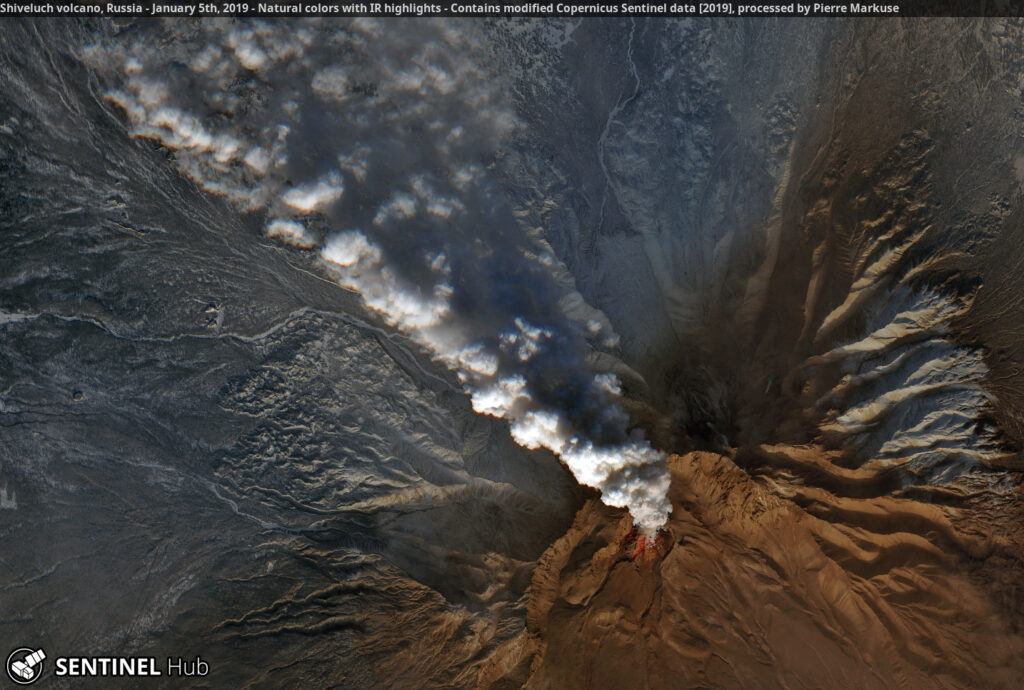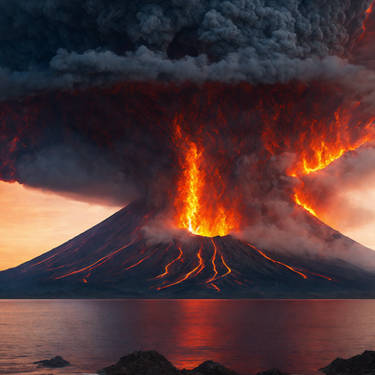Russia Volcano Eruption: On August 18, 2024, a powerful earthquake struck the Kamchatka Peninsula in Russia’s Far East, triggering a significant eruption of the Shiveluch volcano. The earthquake, which registered a magnitude of 7.0, created a chain reaction that led to the eruption of one of Russia’s most active and dangerous volcanoes.
Russia Volcano Eruption: The Earthquake and Eruption
The earthquake’s epicenter was located approximately 108 kilometers southeast of the nearest city, and it struck at a depth of about 6 kilometers beneath the ocean floor. The force of the tremor was felt widely across the region, sending shockwaves through the area and initiating the violent eruption of the Shiveluch volcano.
Within moments of the quake, Shiveluch began spewing massive plumes of ash into the sky, reaching heights of up to 5 kilometers. This created a hazardous situation for both residents and the environment, as the ash cloud spread over 490 kilometers to the southeast, blanketing villages and contaminating the air with volcanic dust. The eruption also temporarily triggered a “code red” warning for air traffic, as the ash posed a serious threat to aviation (Daily Jang) (euronews).
Shiveluch Volcano: A History of Activity
Shiveluch is one of Kamchatka’s most active volcanoes, with a long history of eruptions. Located on the Kamchatka Peninsula, this stratovolcano has been responsible for some of the most significant volcanic activity in the region. The 2024 eruption is just one of many in its recent history, but it stands out due to the earthquake that triggered it and the subsequent environmental impact.

Impact on the Environment and Public Safety
The eruption has had a significant impact on the local environment. The massive ash cloud not only polluted the air but also coated the landscape with a thick layer of volcanic ash, which can be harmful to crops, water supplies, and infrastructure. The Kamchatka Volcanic Eruption Response Team was quick to issue warnings and monitor the situation closely, but the threat of further eruptions and seismic activity remains a concern for both scientists and residents.
Fortunately, no injuries were reported despite the severity of the event. Russian emergency services acted swiftly, and local authorities have been working to ensure that residents are safe and that the ash does not lead to long-term health issues. However, the eruption has raised concerns about the possibility of even stronger seismic activity in the near future. Some experts from the Russian Academy of Sciences have warned that this event could be a precursor to an even more powerful earthquake, potentially reaching a magnitude of 9.0, within the next 24 hours (Daily Jang) (euronews).
Global Implications
The eruption of the Shiveluch volcano has also captured the attention of the global community. The Kamchatka Peninsula is part of the Pacific Ring of Fire, an area known for its high levels of seismic and volcanic activity. The events in Russia serve as a reminder of the unpredictable and often destructive power of nature. The incident has also highlighted the importance of monitoring and preparedness in regions prone to such natural disasters.
Conclusion
The August 2024 eruption of the Shiveluch volcano, triggered by a 7.0-magnitude earthquake, stands as a significant event in the ongoing story of Kamchatka’s volatile geology. While the immediate crisis has been managed, the potential for further seismic activity remains a concern. For now, the people of Kamchatka, along with the scientific community, remain vigilant, prepared for whatever may come next in this ever-active region.
This incident serves as a stark reminder of the dynamic and sometimes dangerous world we live in, where the forces of nature can change lives in an instant. The Shiveluch volcano’s eruption is a powerful example of how interconnected our planet’s systems are, and how a single event can have far-reaching consequences.





